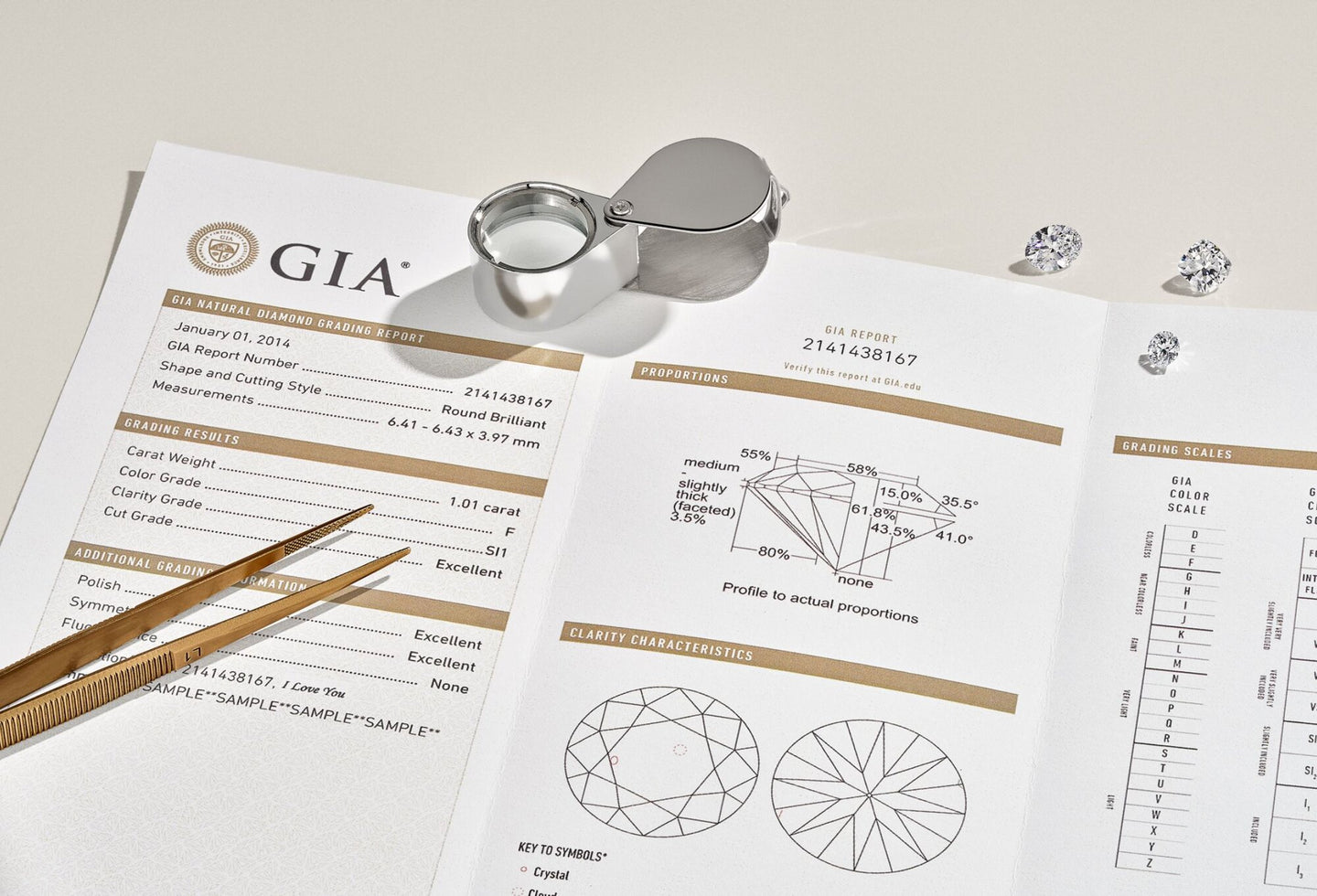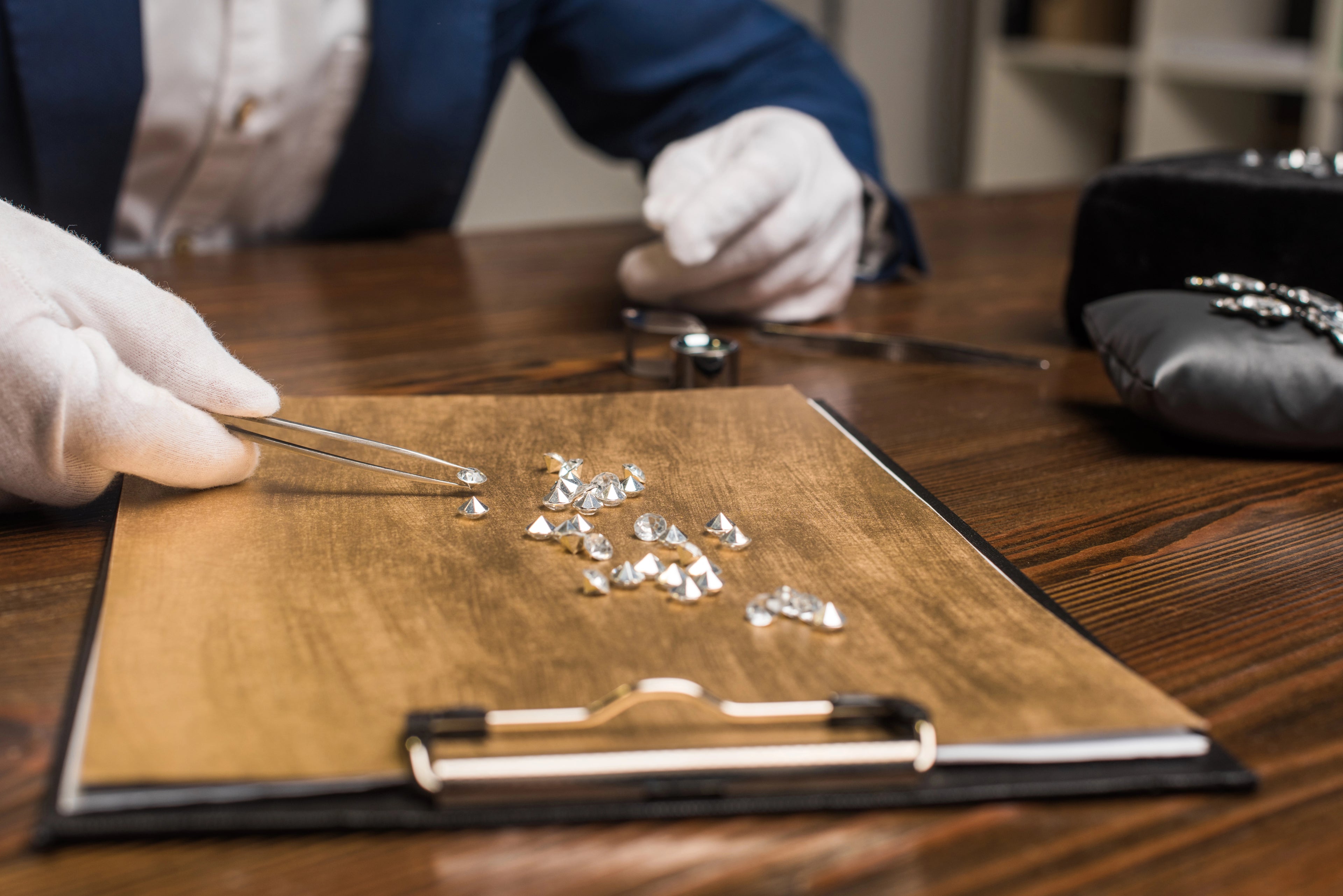
4 C’s of Diamonds
Created by the Gemological Institute of America (GIA) in the 1940s, the 4 C's — cut, color, clarity, and carat — serve as the universal standard for assessing diamond quality. Each C represents a distinct quality attribute, measured on its own scale:
- Cut: Graded from Excellent to Poor on the GIA scale and Ideal to Poor on the International Gemological Institute (IGI) scale
- Color: Graded from D (colorless) to Z (light yellow or brown)
- Clarity: Graded from Flawless (FL) to Included (I3)
- Carat: Measured in metric carats, where one carat equals 200 milligrams
| Lab-Grown Diamonds | Natural Diamonds |
|---|---|
| Diamond hardness: Like natural diamonds, lab-grown diamonds are rated 10 on the Mohs scale and are scratch resistant. | Natural diamonds are famous for their hardness and brilliance. Like with lab-grown diamonds, they too are rated 10 on the Mohs scale. |
| Chemical composition: Unlike lab grown diamonds, natural diamonds are created with pure carbon and are made with the same chemical structure. | Natural diamonds are made of pure carbon deep beneath the Earth and shaped over millions of years, resulting in shared chemical makeup. |
| Density: Similar to natural diamonds, lab-grown diamonds have a density of 3.52 grams per cubic centimeter. | Contributing to their weight and feel, natural diamonds have 3.52 grams per cubic centimeter density. |
| Refractive index: Both lab-grown and natural diamonds have a refractive index of 2.4, which determines their brilliant sparkle and light refraction. | Natural diamonds exhibit the same refractive index, producing the iconic fire and brilliance highly valued in jewelry. |
| Origin: Using advanced technological processes like HPHT or CV, lab-grown diamonds are produced from pure carbon. | Natural diamonds are mined from the Earth’s crust through extensive excavation, a process that can be labor-intensive and environmentally impactful. |
| Cost: Generally, lab-grown diamonds are 70–80% more affordable than natural diamonds, offering consumers significant savings while maintaining quality. | Natural diamonds tend to be more expensive due to their rarity, market demand, and the costs associated with mining and distribution. |
| Certification: Lab-grown diamonds are certified by reputable international gemological laboratories, guaranteeing their authenticity and quality. | Certification: Natural diamonds also receive certification from gemological institutes. |
| Environmental impact: Producing one carat of lab-grown diamond saves approximately 100 square feet of land, significantly reducing habitat destruction and ecosystem damage. | Mining one carat of natural diamonds typically uses around 100 square feet of land and often results in deforestation and soil disruption. |
| Water usage: About 18 gallons of water per carat used, reflecting a much lower water footprint. | In contrast, natural diamond mining consumes about 126 gallons of water per carat, making it a far more water-intensive process. |
| Traceability and ethical sourcing: Lab-grown diamonds offer full traceability from creation to sale, ensuring ethical sourcing. | Natural diamonds may face challenges with traceability, and some can be associated with unethical mining practices. |

